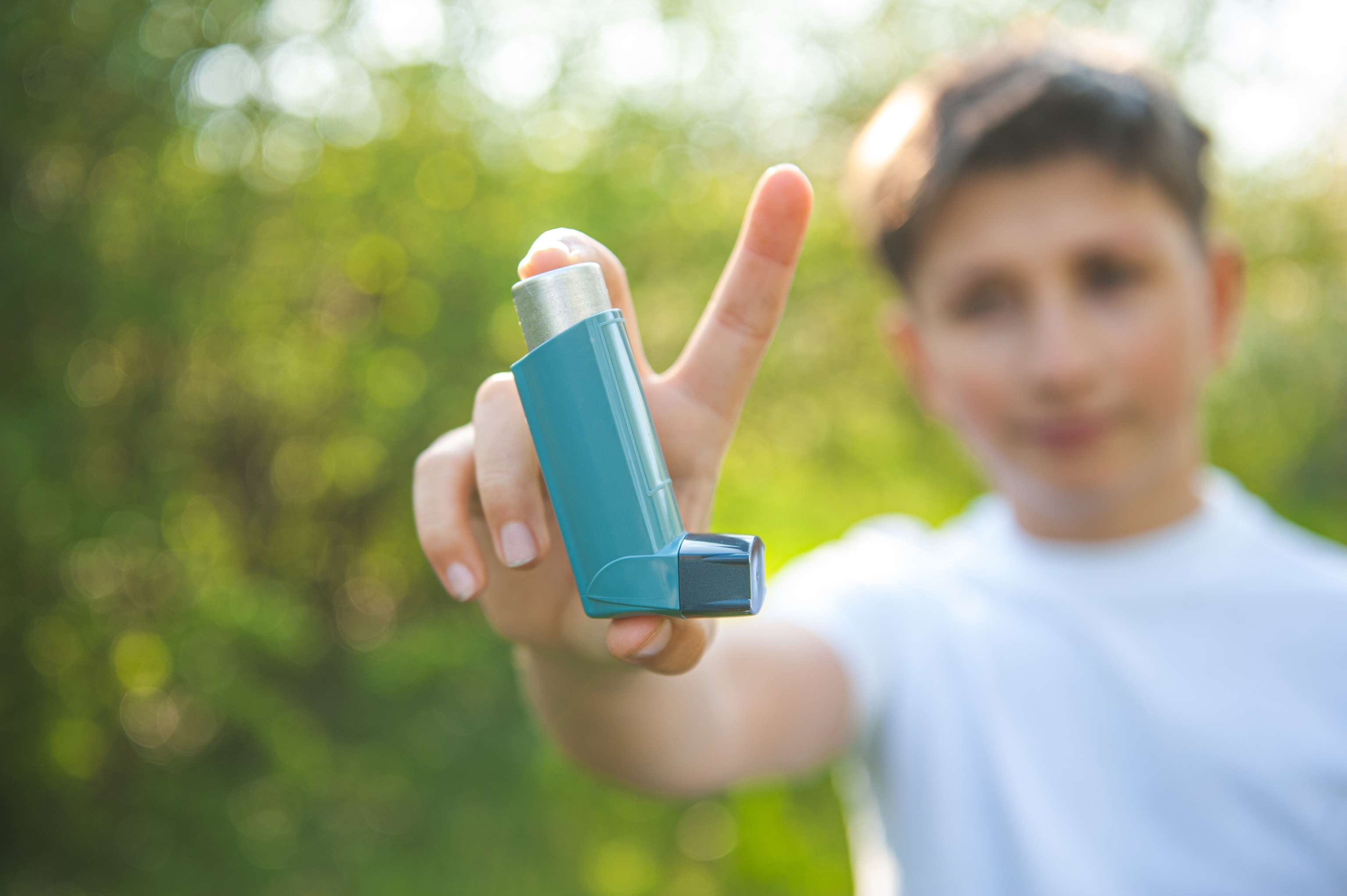Can regular exercise improve asthma control?

Asthma:
Bronchial asthma, or just asthma, is a respiratory disease caused by chronic inflammation of the bronchial tubes. Those affected suffer from attacks of breathlessness and coughing. A distinction is made between two forms:
- Allergic asthma: here the reaction of decreased lung function is caused by contact with certain allergies.
- Non-allergic asthma: The asthmatic attack is provoked by non-specific stimuli such as infections or even cold breathing air.
The task of the human bronchial tubes is to conduct the inhaled air from the trachea to the alveoli. There the gas exchange takes place: Oxygen is absorbed into the blood and carbon dioxide is released into the air for exhalation.
Lung disease causes the mucous membrane that protects the inside of the bronchial tubes to swell. As a result, the bronchial tubes narrow and a thick mucus is produced. The consequences are difficult inhaling and exhaling and an increased breathing rate.
Exercise training can trigger these asthma-related symptoms and therefore leads to an eventual reluctance to exercise in asthmatics. While doctors used to discourage exercise for asthmatics, the positive health effects of exercise became established in healthy individuals. Now the question is whether physical activity could also provide certain benefits for asthmatics.
To investigate this, scientists in Finland have now set up a so-called REACT study (i.e. Regular Exercise and Asthma Control Trial).
Note: If you are affected by asthma, check with your doctor first before attempting any physical exercise. Study participants in the said study were controlled under medical supervision as per the respective guidelines.
Physical examination:
The REACT (German: Studie zu regelmäßiger körperlicher Betätigung und Asthmakontrolle) is a randomized, controlled, parallel study published in 2019, in the journal Nature-Research. A total of 164 study participants were enrolled and evenly divided into two groups. This involved analyzing the asthma control of the study participants for 24 weeks using physical exercises.
Die Interventionsgruppe erhielt individuelles Training: Aerobic Training mindestens dreimal die Woche für wenigstens eine halbe Stunde, Muskeltraining und Dehnübungen.
The inclusion criteria were as follows:
Inclusion criteria |
|
|---|---|
| Age | 16 - 65 years of age |
| Diagnosis | From doctor or eligibility for reimbursement of asthma medication from Finnish Social Security. |
| recent diagnosis | Person had to meet the diagnostic criteria for asthma disease according to Finnish guidelines for asthma management |
| Type of disease | mild or moderate asthma |
Primary method of measurement for asthma control was the so-called ACT score (i.e. Asthma Control Test). This is based on a subjective rating of 5 possible points for asthma control, with 5 to 25 points available. 5 points for the worst possible control and 25 for the best possible control. Because this test type is subjective and a change in ACT score is comparable for individual subjects-but poor for cross-person analyses-scores were assessed primarily within individuals before and after the intervention. This analysis indicated whether asthma control was better after study treatment than before.
Significant results:
The primary end goal was asthma control, which was measured using the ACT score, asthma-related symptoms, and the so-called PEF (i.e., peak expiratory flow). The PEF is a measurement that can capture the maximum expiratory flow rate.
In the intervention group, or IG, the ACT improved in 62% of participants. The control group showed improvement in 39% of participants. The exercise intervention was able to improve overall asthma control by 23%, according to study results.
Additionally, the study group experienced a significant reduction in the use of emergency asthma medications during the study investigation.
Individual analyses showed statistically significant reductions in the occurrence of shortness of breath with a risk difference of nearly 70% between the two groups - meaning that the intervention group experienced up to 30% less shortness of breath.
PEF values in the morning and evening were similar in both groups. However, the measured values did not show significant improvements in maximum expiratory flow rate.
Conclusion:
The results show that certain regular physical activities, during a 24-week period could improve asthma control in adults, according to the researchers, if measured individually with a standardized asthma control test. However, maximum expiratory rate was not significantly improved. Larger randomised trials may be able to accurately explore a new, important approach to the additional treatment of asthma control, potentially improving the quality of life of asthmatics.
Note: If you are affected by asthma, check with your doctor before attempting any physical exercise. Study participants in the above study were controlled under medical supervision according to the respective guidelines.
Sources

Danilo Glisic
Last updated on 27.09.2021
Your personal medication assistant
Browse our extensive database of medications from A-Z, including effects, side effects, and dosage.
All active ingredients with their effects, applications, and side effects, as well as the medications they are contained in.
Symptoms, causes, and treatments for common diseases and injuries.
The presented content does not replace the original package insert of the medication, especially regarding the dosage and effects of individual products. We cannot assume liability for the accuracy of the data, as the data has been partially converted automatically. Always consult a doctor for diagnoses and other health-related questions.
© medikamio